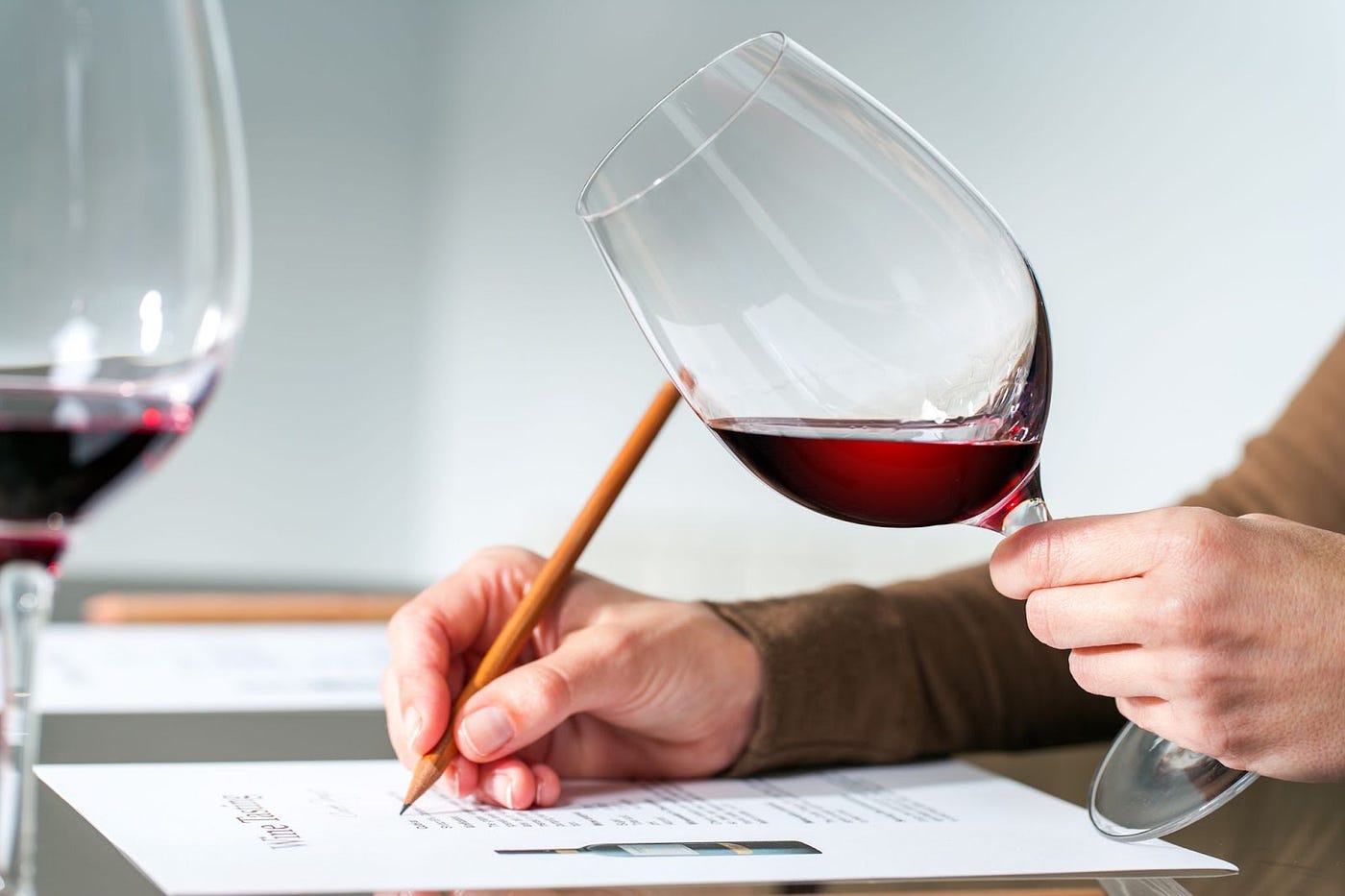- Wine Color/Type
- Top Occasions
- Unique Wines
- Surprise Me!
Should You Trust Wine Ratings?
We frequently come across situations in which a wine merchant’s website proudly promotes a wine with a 93-point rating. Similarly, while shopping in the supermarket, we might spot bottles with shining gold medal stickers, courtesy of prestigious wine magazines. These wine ratings provide a direct channel for wine critics to convey their opinions on the quality of a wine. As a result, many people associate a wine with 90+ points with high quality.
Wine scores or ratings have a clear purpose: to assist consumers and collectors in making informed judgments regarding their wine purchases. Such ratings are also effective marketing tools for both wine growers and retailers. But, in the midst of all of this, have you wondered how the wine ratings work? And should you trust wine ratings with eyes closed?
Wine expert rates the wine (Photo: karelnoppe/stock.adobe.com)
Decoding the Numbers: How Wine Ratings Work
In short, wine ratings are the standardized, numeric assessment of the quality of wines. The wines are rated during tasting sessions, conducted by wine critics or a panel of wine specialists, free of any sponsorship, with the goal of maintaining the impartiality and authenticity of wine ratings. The procedure of awarding these ratings is meticulously planned to evaluate different quality factors inherent in wine, including aromas, tastes, and the wine’s ability to age gracefully over time. While the majority of wine writers and wine journals use a 100-point rating system pioneered by the legendary American wine critic Robert Parker, several European critics such as Jancis Robinson and Bettane & Desseauve continue to use the more traditional 20-point scale.
More Than Just Numbers: the Influences of Wine Ratings
Wine ratings have a powerful influence that reaches into many different areas of the wine world. Their influence on price dynamics is obvious; for example, in Bordeaux’s En Primeur system, critics evaluate wines while they are still in barrels, with their ratings dictating the price as negociants respond to this decision.
Due to critics’ clout, some wine regions flourish while others remain unseen since the preferred wine style of each critic is generally scored higher than other styles. Wine ratings influence consumer preferences and further impact the growth of the wine region. The famous “Parker phenomenon” exemplifies this, as Robert Parker’s penchant for rich, robust wines drove global trends, has guided wine regions such as Bordeaux, Napa Valley, Rhone, and Rioja towards a specific style, pushed by buyers seeking wines with a high Parker score.
This is a double-edged sword: on one hand, the success brought by high ratings encourages wine producers to continually improve the quality of their wines. On the other hand, it takes more effort for those who are not favored by the market. In order to adapt to the market, some wine producers abandoned the traditional style of the region and made wines that were easier to achieve high scores, resulting in the homogeneous style of diverse wine regions around the world.
The Missing Puzzle Pieces: Limitations of Wine Ratings
The limitations of wine ratings stem from the inherent subjectivity of taste and the dynamic nature of wine. The rating procedure has two components: an objective quality evaluation and a subjective sensorial experience. While wine critics use a systematic approach to objectively examine aspects of the wine, such as overall balance, complexity, and typicity, the subjective part of tasting causes disagreements among experts on specific wines. Furthermore, wine is always evolving over time and although some wines are tasted at different stages, the majority are simply assessed once when they are released.
Additionally, wine ratings only provide a glimpse into the vast spectrum of wines. Despite the wine critics evaluating thousands of wines every year, this is just the tip of the iceberg of the wines produced globally. Many wines, particularly those from lesser-known regions or smaller producers are unrated. With only the high-scoring wines published, wines with low ratings are unlikely to make it into the marketing spotlight.
Wine scores can be helpful for consumers (Source: Unsplash)
So, back to the question: can you trust wine ratings? Wine ratings do provide an objective assessment of the quality by the world’s most acclaimed wine experts. Yet, it’s not wise to depend on the wine ratings completely, as individual tastes differ. Instead, try to use it as a compass to guide you when you have difficulties making choices or when you buy wine as an investment, but at the same time, do not be afraid of exploring new things and develop your own taste preference. After all, what’s fun to only follow the scores and miss out on the whole world of amazing wines? Join VinoVoss to explore the ocean of wine without limits!
Sylvia Ba
Latest articles


